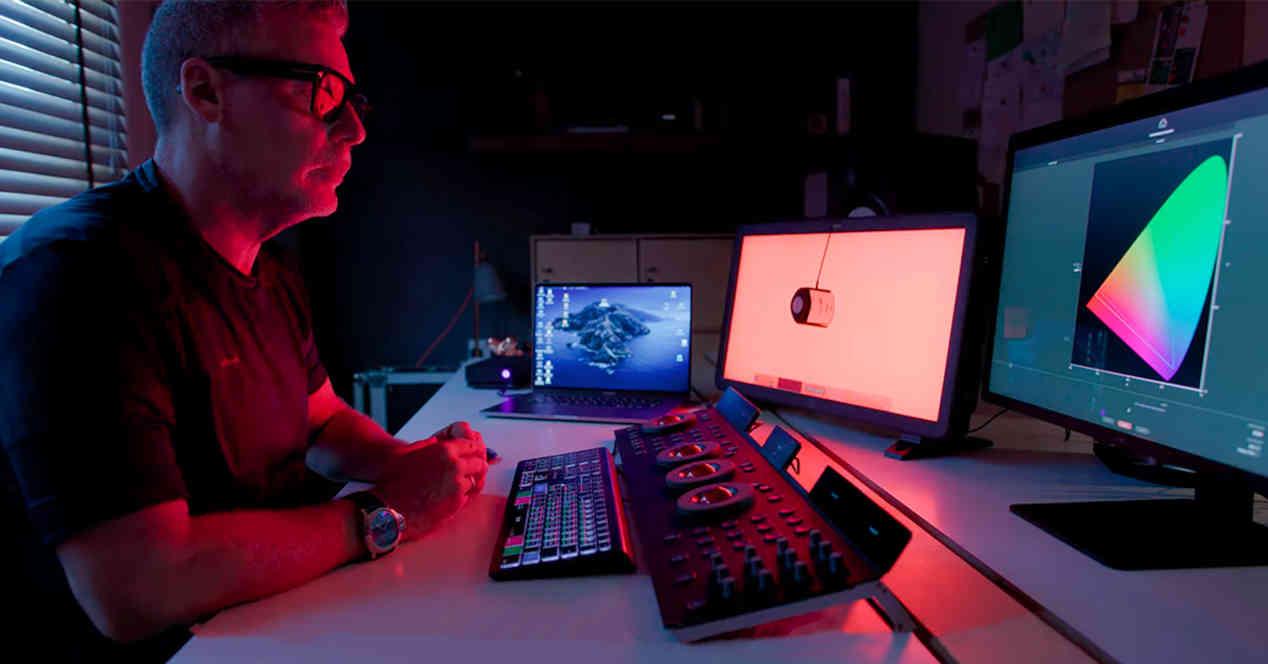The colorimeters for their operation are based on a law of optics, the Beer-Lambert law which refers to the relationship between the absorption of light and the properties of each material. Basically, it describes how the amount of light transmitted through a medium is proportional to the concentration of said medium.
It is actually the composition of two different laws, where Beer’s Law states that the intensity of a color is directly proportional to the concentration of particles of that color in a liquid solution. While Lambert’s theory states that the amount of light absorbed in a colored solution depends on the length of the column and the depth through which the liquid passes.
What is a colorimeter?
A colorimeter is a material element that serves to identify colors and their shades, therefore it is responsible for measuring the quantification of color and this means the numerical values with which we identify each of them, which correspond to the wavelength of each of them.
For this, it uses the principle of the Beer-L ambert law for its operation. Thus, in a colorimeter, a light ray of a particular wavelength passes through a liquid solution through a series of lenses. This waveform light is read by a reading device and interpreted by a microcontroller inside the colorimeter which compares it to other stored values.
The most common use of colorimeters is in graphic design, for example in prepress it is used to ensure the correlation between the RGB colors of the monitor and CMYK of the ink on the paper. Although it is not the only application, they also have applications in other areas. For example, in the food industry, it is used in quality systems to measure that the color of food and beverages leaves the factories following a certain color.
What are its components?
A colorimeter is made up of several parts, but they all follow the same steps and use the same components, which are as follows:
- A light source is the object whose color we want to know and which refracts the light towards the colorimeter.
- A monochrome lens, which is a prism-like lens that splits light into its essential color components.
- The bucket of liquid, over which the monochromatic light passes.
- An electronic detector, which detects the corresponding wavelength and sends the information to a microcontroller.
- An LCD screen, which will show us the corresponding information in a way that we can understand after the microcontroller interprets the information.
Why do we need a colorimeter?
When the graphics card generates an image, it stores the information in a part of the VRAM which stores the RGB values for each pixel that is going to be displayed on the screen. The next step is performed by the display controller, a microcontroller within the same GPU that reads the information stored in the video memory and takes care of sending it to the video output, be it HDMI, DisplayPort or any other interface. sending video. .
The logical thing would be to think that color information encoded by the GPU and sent to the monitor results in the exact same colors at both ends, but most monitors have the “problem” of representing color with some variation, which which does not affect if we are not image professionals, but if we need a 1:1 correlation, it becomes a problem for which we must calibrate the monitor.
Many monitors and graphics cards for professional use contain software to calibrate the color of the monitor, but these are solutions that are limited compared to the use of hardware calibration of the monitor via a colorimeter, which is a piece of hardware used by graphic design professional monitors so your monitors display the right colors.
The monitor is also important
Once we have explained what a colorimeter is, it’s time to talk about the differences regarding the color calibration tools included in the monitor. These are those included in its driver as well as certain functions in the firmware of certain professional monitors.
When a software color calibration is performed, an array is created that stores the RGB value corrections to be sent to the monitor. Those used for professional environments store the array in non-volatile internal memory, so the monitor remembers how to represent each color, regardless of the value sent. That is, the array stores the correlation between the values sent by the graphics card through the video output and the correct ones.
That is why if we are dedicated to the world of graphic design, photo editing or any other change, we must see if the monitor has hardware calibration, because it makes a fundamental difference in terms of operation and you will save hours of work. .the time to have to calibrate the color displayed by your monitor.
Table of Contents











